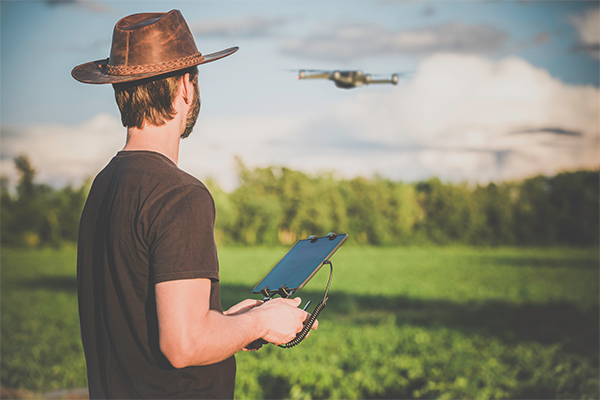Digital information is at the heart of our development – as a society, a country, an integrated global network. Managing, accessing and securing that information is key to our future success. But what does the future of information technology and cyber look like?
We sat down with Charles Sturt University’s expert academics to discuss it.
Take your place at the cutting edge of information and IT. Explore Charles Sturt’s information, IT, data and cyber security courses.
Information technology is a part of everyone’s lives
Ms Maumita Bhattacharya, a senior lecturer in information technology at Charles Sturt University, explained the sheer prevalence of IT today and in the future.
“Nearly everyone, regardless of their profession, is using IT. So most people need to be tech-savvy to some degree in order to perform their role. Not everyone, of course, will need high-level IT skills, but this prevalence of IT in the workplace will mean that there will need to be lots of skilled people to manage the technological systems other people will use.
“If we want a progressive, advanced and secure Australia, we will need many skilled professionals. We will need software developers to put new knowledge into action in all sorts of industries. And we will also need data engineers, data analysts and data scientists to manage, analyse and interpret the data for use in every field, from healthcare to agriculture to urban development. To secure information assets and information infrastructure, we will need cybersecurity experts to prepare detection and prevention mechanisms, to react to IT security breaches and so on breaches.”
IT becoming part of… everything?

A former Charles Sturt lecturer in IT, Ms Joanne Parker, agrees that the application of IT is very extensive – and will continue to be so.
“If you look at almost any workplace – or almost any facet of your life, from phones and games to the Internet of Things – we are using information technology all the time. IT is also important in future developments like robotics and automation, and the capacity for that will grow. Driverless cars, for example, look like they will become more prevalent (perhaps within the next five to 10 years in Australia), but that requires a lot of technological infrastructure and systems – from communication between cars and traffic infrastructure to how CBDs are set up to manage the traffic flow of driverless cars. That all needs to be built and managed by professionals.”
The challenge of security

Increasingly, any discussions around information and data need to be accompanied by considerations of cyber security.
Increasingly, notions of information and data need to be accompanied by considerations of cyber security. There’s no getting away from it, as more of our live involve technology, the more cyber crime will seek to exploit it.
- Organisations sponsored by nations will continue developing cyberattack technologies for defence and offence purposes.
- Criminal groups will continue to seek ways to use cyberattacks for financial gain.
- Hacktivists will continue using cyberspace to send their messages.
- Terrorist groups will move their activities to cyberspace.
- People with the necessary technical skills but no obvious motive will continue contributing to the attacker ecosystem as a way of showcasing their abilities.
But that does mean cyber security professionals will be in demand. The Australian Cyber Security Growth Network projects that over the next decade the cyber security industry in Australia may triple. And revenues will rise from just over $2 billion today to as much as $6 billion by 2026. It’s no wonder the government predicts demand for IT security pros to be among the highest in the future workforce.
An increasing range of applications

Ms Bhattacharya sees IT and data as key components in the progress of the country in the future – across everything from aged care to agriculture.
“At a national level, in the future Australia will want better national security, better management of natural resources, accommodation options, better healthcare accessible to all inhabitants regardless of where they live, increased productivity in agriculture – all these things, and many more, can be enhanced by information technology.
“For instance, an aged care home in a remote town; there might not be access to sufficient medical care. We can equip a “smart” home with artificial intelligence, so that health monitoring can be done remotely, such as space sensors that can detect areas where a person should be seated, vertical or horizontal, and transmit a warning if those states are not correct, such as someone has had a fall. Also, as with wearable technologies now, devices can be used to monitor key physiological conditions and transmit alerts to healthcare providers if irregularities occur.
“Or how about agriculture of the future? Information and communication technologies are rapidly redefining the agricultural landscape and role of farmers in the digital era. Cross-disciplinary research involving software engineering, data analytics, farm management, climatology and phenomics will assist farmers with cropping decisions, forecasting crop yields and managing farms in the most cost effective and sustainable way.”
The future of information technology is full of opportunity

Ms Parker sees these sorts of developments – and those yet to come – as creating a vibrant future for professionals.
“Working in IT means that your career can take you across many industries. There are a range of possible roles – from project management to network engineering, cybersecurity, marketing, programming and so on. And the diversity of information technology applications means that there is the potential for you to change roles during your career. You can grow your professional experience, if you wish. You need a solid foundation in the theories and principles of information technology. However, upskilling will be increasingly important as the rate of change and innovation increases. The ‘syntax’ of IT is likely to remain fairly similar. But their application is likely to evolve considerably. Professionals will need to stay on top of them.
“But it’s exciting. We don’t know what will be down the track in twenty years’ time. However, people will innovate and invent new things all the time. If you have ideas – from apps and animation to agriculture – there will be opportunities to push knowledge forward. There’s such a diverse range of roles that IT professionals could do. Many of these are areas that people coming into IT for the first time might not even think of at first.”
Ready to shape the future of information technology and cyber?
Explore Charles Sturt University’s information, IT, data and cyber security courses. From bachelor’s degrees to kickstart your career, to graduate certificates that will upskill you in as little as six months and master’s degrees to specialise and advance your knowledge – we have a course to get you where you want to go.
Contributors
Maumita Bhattacharya is a senior lecturer in information technology at Charles Sturt University. Her primary research interests are engineering and applications of natural computation, machine intelligence and data mining techniques, and information security.
Joanne Parker is a former lecturer in information technology at Charles Sturt University. Her research interests include virtual communities, IT project management and the enhancement of learning and teaching.



You must be logged in to post a comment.